THE GENERAL ELECTION OF 1956 Part 10F
Posted on April 15th, 2021
KAMALIKA PIERIS
The political and social upheaval caused by the 1956 government received a mixed reaction in Sri Lanka society. 1956 had different connotations for different groups. For the English speaking elites in Colombo and elsewhere in the island, the world turned upside down.
From 1948 to 1956 political power in Ceylon had been held by the English educated elite. This elite was highly westernized, Anglophile, right wing and Christian. Many had close ties to the UNP. its right to rule had never been challenged. Up to 1956, the ideal politician was one who belonged to the westernized Ceylonese elite and behaved like an Englishman. Now their political power was under threat.
The political role of the English educated elite began to erode before their eyes, said Wiswa Warnapala. When the rural group and the lower middle class became MPs in Parliament and ministers in SWRDs government, the elite classes were in a rage. The position given to common persons was unbearable to the elite who thought that a seat in Parliament was their prerogative alone.
The elite took the view that the rural sector was not entitled to a place in the sun. That was reserved for the westernised elite alone. The elite looked down on the rural MPs as ‘miserable backwoods creatures who had been washed into prominence by the unexpected tidal wave that hit the island in 1956’ (Flybynight).
This elite opposed the dethronement of English, the arrival of Sinhala, the election of rural MPs, the revival of Buddhism and free education. They objected most to the enthroning of the Sinhala language. For some, it was a never to be forgotten monumental event. As the Sinhala speaking segment rose, their own position would be affected, especially since their own Sinhala was not that good.
There was animosity also to the rise of the whole Sinhala Buddhist segment. This segment had risen upwards due to two innovations, Free education and Swabhasha. The cartoonist Aubrey Collette (1920-1992) responded to this. He drew two mocking cartoons of GP Malalasekera fondling his OBE medal and CWW Kannangara pointing to the Pearl of great price, Free education. These two cartoons are featured in Neville Weeraratne’ book ’43 group’ and belong to the Brendon and Yasmine Gooneratne collection.
Collette was the cartoonist at Ceylon Observer in the 1956 years. His cartoons reflect the attitude of the westernized elite. The first cartoon given below suggests that change is not necessary for Sri Lanka. Sri Lanka should not be changed in any way. it should continue as it did under British rule. the second and third cartoons imply that Sinhala was a backward primitive language, used in ancient times, by natives who were no better than monkeys. the Sinhala Only” policy of 1956 would take us back to the same primitive level and turn us into apes.
The most sneering contemptuous opposition to SWRD came from this English speaking elite drawn from all communities, said HLD Mahindapala. It is this group who led the 1962 coup.(continued)
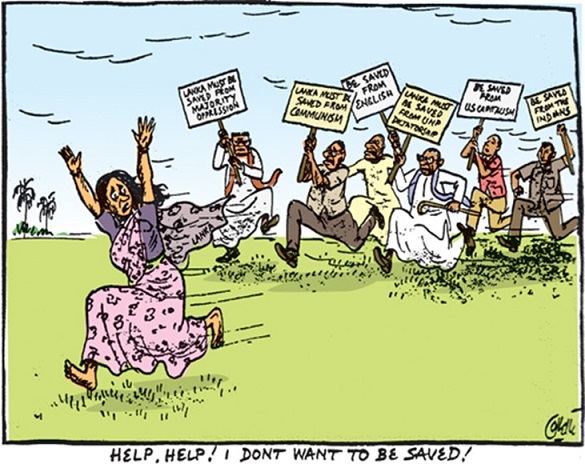
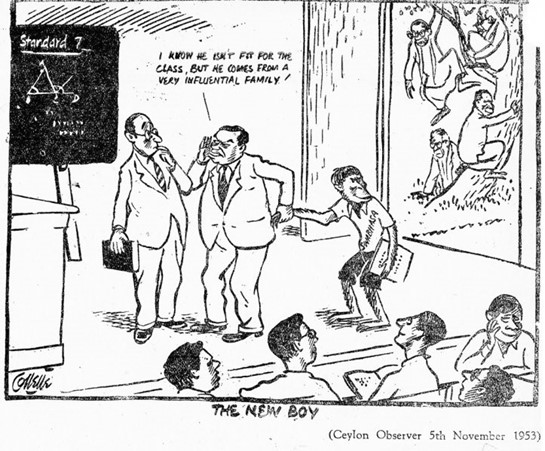
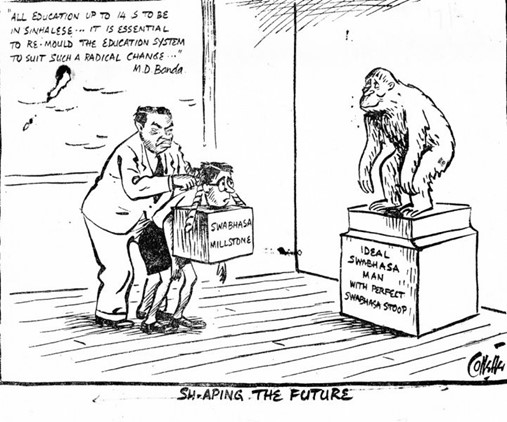
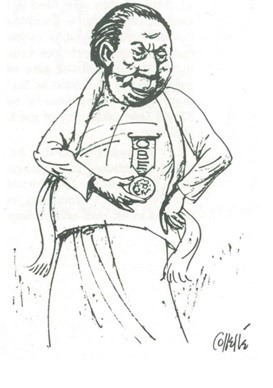
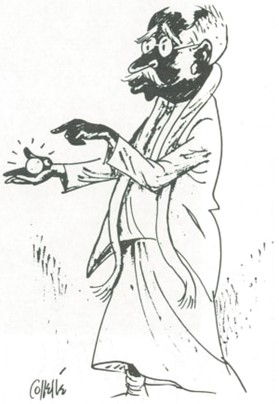
April 16th, 2021 at 9:55 am
It is so sad that the then reactionary forces , whoever they were, conspired and assassinated S W R D. Bandaranaike, thus depriving of the great opportunity to see in which direction Sri Lanka would have gone. Not satisfied with that these same forces deprived Sirimavo Bandaranaike if her civil rights.